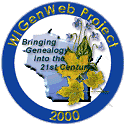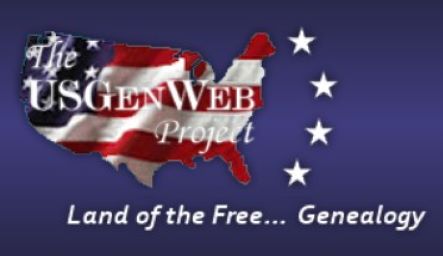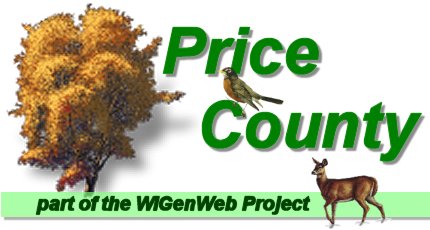|
“Knox Mills no longer exists –
that is, it no longer exists as it once was. At the turn of the century it
was a busy lumber town. It remained so until the timber was gone and then
it became a farming community. The last mill closed in 1931 when the timber
was almost gone, the country in a depression and the rails removed. Now the
farming community is gone as well. There are only a few farms struggling
along.”
This
quote is from Culture and Continuity
of Knox Mills, Wisconsin
(1864 – 1931) written by Joyce I. Bant, June
1985. Joyce, a native of Knox Mills, conducted extensive research on Knox
Mills that resulted in a manuscript documenting the settlement and history
of Knox Mills. Joyce has graciously given permission to share excerpts from
her research project in this Price County GenWeb
site. Due to the length of her manuscript, only excerpts have been used
here to provide you with a glimpse into the past and the community of Knox
Mills. All of the quotes are directly from her manuscript. Joyce’s
information may be reproduced, however, please be sure to cite her work as
your resource. For more information on her complete manuscript, please
contact her at:
joyce.bant@gmail.com
Knox
Mills was located in southern Price
County, in the Town of Knox. The community
thrived along Old Mill Road,
a 1-mile stretch of gravel road that runs east and west between West Knox Road
and County Highway D.
Excerpts
from the Introduction:
“When W. H. Knox, E. H. Hobe, and
Bradley and Collins owned the mills it was a company town with a school, a
post office, a general store and boarding and company houses for the
employees, which clustered around the mills and formed a nucleus. There
were no streets but it was divided into two sections. The east side of
town, by the pond, was known as Frog
Town. It was named
for the multitude of frogs that lived by the water there and brought
attention to themselves by their croaking and singing. The west side of
town was Pig Town. It was so named because most
of the residents of the company houses on that side of town raised pigs.”
“Beyond this nucleus Knox Mills extended
to the school district #1 boundaries. Within those
boundaries were nine whole and four half sections, a total of 7,040 acres.
If you were born or died within those boundaries the record gave the place
of birth or death as Knox Mills. Therefore, Knox Mills was not only the
little mill town but also the entire farming community that surrounded it.”
“When the mills were operating the Soo Line found it profitable to maintain a track off
their main line into Knox Mills. That main line ran east and west from Minneapolis to
Rhinelander about four and one-half miles north of Knox Mills. The logging
trails that ran into Knox Mills were as important as the railroad. They ran
like spokes into town, making it the hub of logging operations during the
winter months. Every day people and products flowed in and out of the
little community. Now Knox Mills isn’t even on the map. The mills, homes,
church and store are all gone now. The school is gone too and with it the
perimeter of the community. All that is left in the town is Floyd’s Salvage
Yard. His place of business was once the cheese factory. There are also two
residences left that have been there since the beginning. The one in Pig Town was originally owned by Town
Treasurer (1897 – 1900) Robert Rasmussen and Minnie, his wife, who was a
Knox Mills teacher from 1898 – 1091.”
“The other residence is in Frog Town, almost directly across from Floyd’s Salvage
Yard…Audrey (Thorbus) Birch of California now
owns that home. Ironically, her mother is my Dad’s sister, so the two
oldest houses have ties to Oscar Swenson, one of Knox Mills
first settlers.”
“The story of Knox Mills is tied to land
speculation. After the territory was surveyed rich land speculators sent
“timber cruisers” in to find the richest stands of pine, the only thing
that was valuable to them at the time. Frances Palms was the first one to
find the pinelands where Knox Mills is located. He acquired that land
shortly after it was surveyed, when it was still wild and unsettled. When
the land was opened up it would become valuable, and he could afford to
wait. That land became attractive to potential buyers after the railroad
was built into the territory, making it easier for supplies to be shipped
for logging camps and for access to the land. Palms had speculated on the
worth of the pine timber and twelve years after he acquired the Knox Mills
lands, he reaped the harvest of his speculation by selling them to the Knox
Brothers, William and Samuel.”
“When the Knox Brothers purchased the
land in Town 35 North, Range 3 East, from Francis Palms they were logging
pine timber just north of there and shipping it down the Somo River to their mill in Wausau. They purchased the Knox Mills
lands strictly for the profit they could make from the valuable pine
timber. For ten years they logged the pine and shipped it to Wausau. In 1890 the
mill burned at Wausau
and the two brothers decided to split their interests. William stayed on to
finish logging the pine in Town 35 North, Range 3 East, and built a new
mill along Long Meadow Creek where it could be damned up to create a
sizable pond. He built his own town around the Mills, making it a company
town of exclusively transients. He had chosen this place because taxes were
low; there were few settlers in need of roads, schools and other services.
During the time that William Knox owned the Knox Mills lands he waged the
biggest tax war in Price
County history. He
was very powerful and his influence was felt in the opening up of the
territory and in the creation of town boundaries in the southeaster section
of the county, the Town of Knox
eventually being named after him. After five years the pine timber was cut
and Mr. Knox moved on to other uncut pinelands.”
“After the pine was cut the Knox Mills
land remained valuable for other purposed. In 1895, William Knox sold the
land to E. H. Hobe, a real estate speculator for a tidy profit. Knox had
not sold any of his land to individuals, and Hobe saw this mill town with
acres of land surrounding it as an attraction for prospective buyers. The
large pine had been cut, making the land easier to clear for farms. The
land was still covered with hemlock and hardwood. Hobe planned to run the
mill in his town and to buy wood from farmers, providing income from both
farm and forest. His advertisements extolling the virtues of this
combination of assets attracted mostly Norwegians who were well settled in
the community by 1900.”
“By then Hobe also had made considerable
profit and was ready to move on to other real estate ventures. Hobe put the
remaining land up for sale in a package with his mill town. Thick hardwood
and hemlock forests remained to be cut, and in that year the Bradley and
Collins Company, which had other enterprises in the area, purchased the
package. Rather than speculating, William H. Bradley, who ran the company,
was accumulating property. Bradley owned much property in Lincoln
and Price County and he added Knox Mills to
his collection of profit making property. He died January 7, 1903, and his
heirs were not interested in Knox Mills. They sold the planning mill,
boarding houses, company store and dance hall, which were then moved out of
town to other locations. Those sales marked the end of the company town.
Then K. O. Knutson, built a new store and dance
hall. Knox Mills became a community of permanent residents who owned their
own homes rather than one of transients who lived in the boarding houses.
Until the Bradley Company sold its three forty-acre tracts of mill property
in 1913 to three separate individuals, Knox Mills existed only as a
shipping point for forest products.”
“After the best of everything was gone,
Knox Mills ceased to be of interest to the speculators who reaped the
harvests of the community. Those absentee landlords derived great profits
from the rich forestland in and around Knox Mills but lived and spent those
profits elsewhere. After the Bradley Company’s mill site was divided and
sold, the new owners made their homes in Knox Mills and ran independent
mills until the Great Depression. In 1926 a cheese factory was built,
marking the transition from a logging to a dairying community. Knox Mills
had boomed because of its rich timber resources and those were gone.
Residents now relied on farming to sustain themselves, but good farmland is
something they never had.”
“By 1931 its major resource was almost
gone and…without and other valuable resources the town began to die.”
“Knox Mills was a small, isolated
community located at the end of the tracks rather than on a main rail line.
There were no town records because it was never incorporated; it has no
newspapers and its businesses never ran ads.”
Back to Top

|




